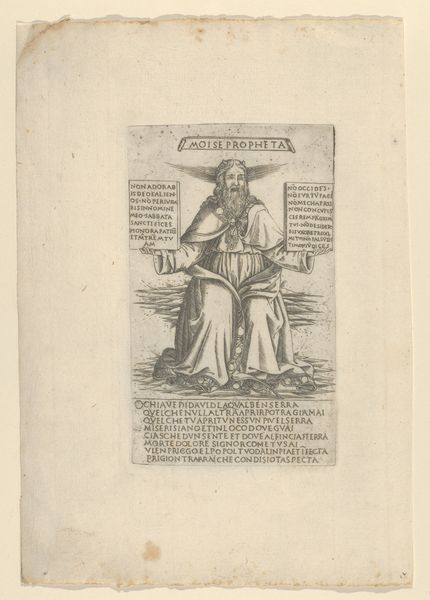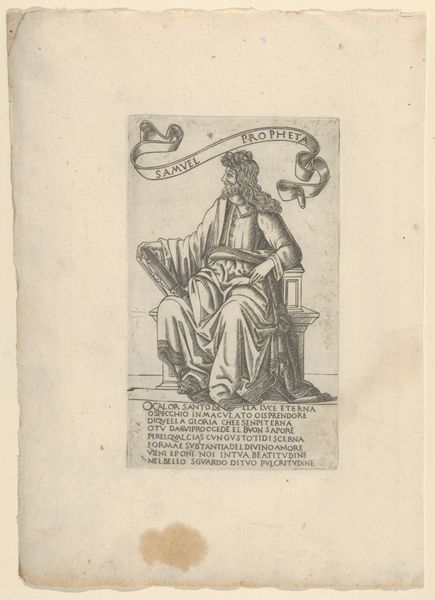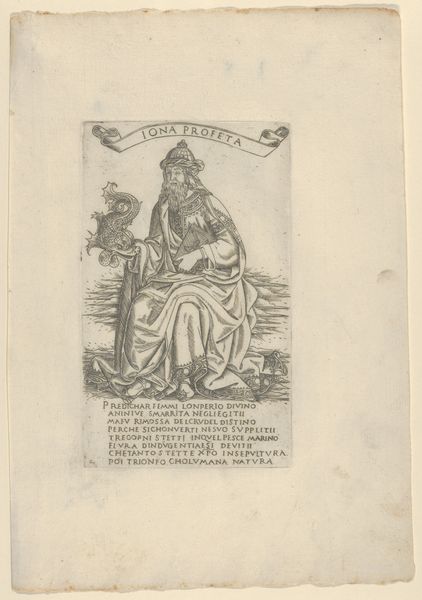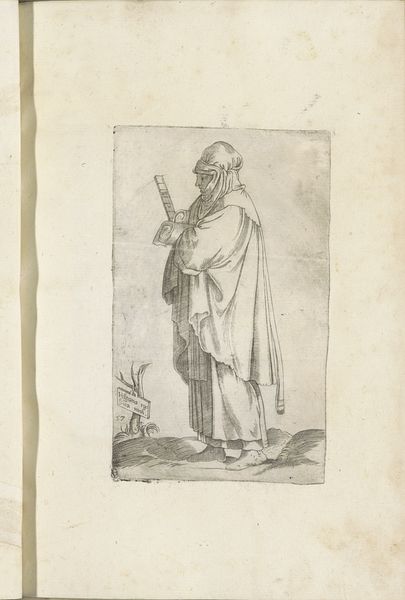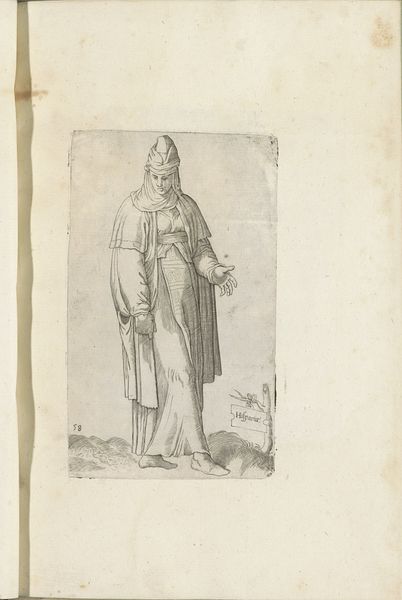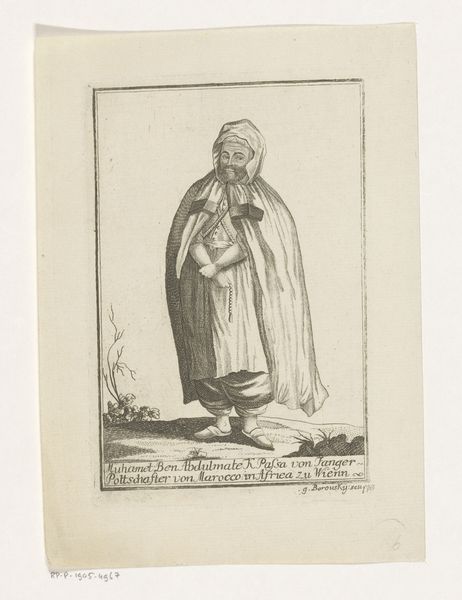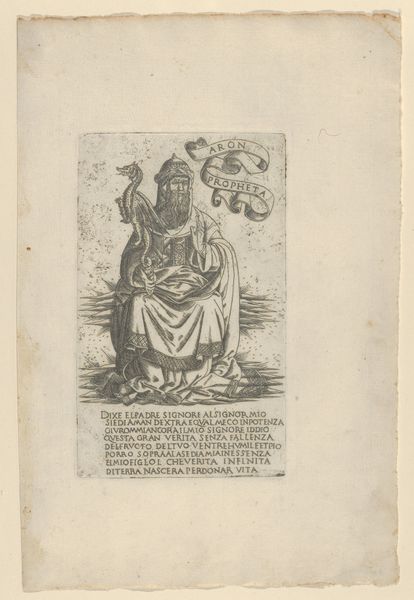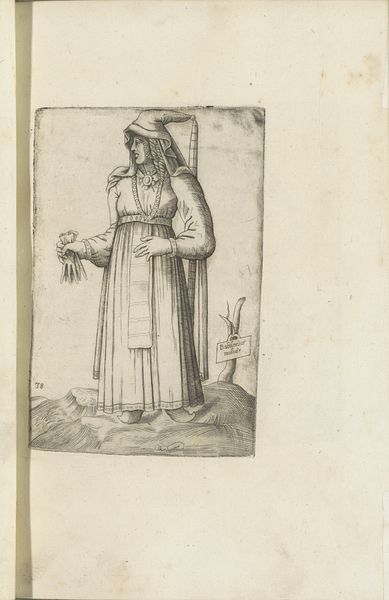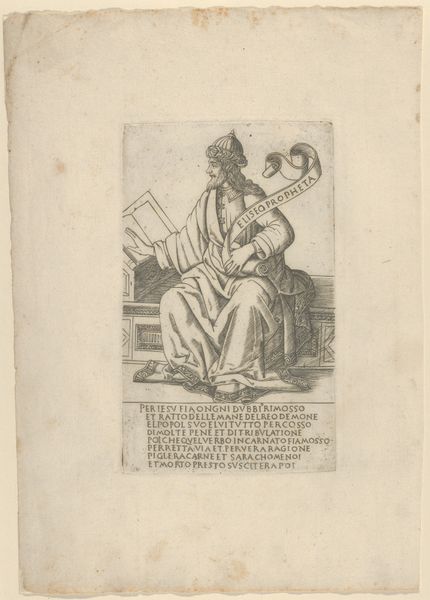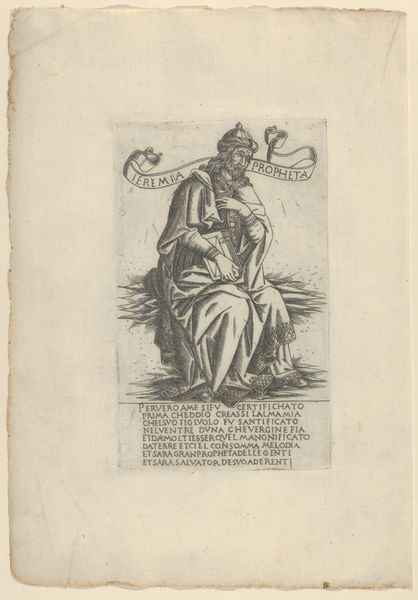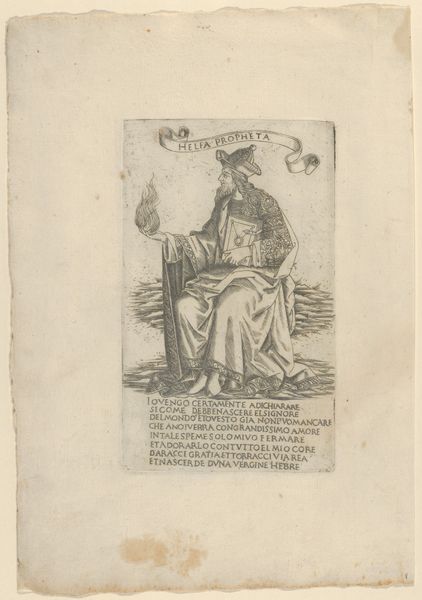
The Prophet Solomon, from Prophets and Sibyls 1480 - 1490
0:00
0:00
drawing, print, engraving
#
portrait
#
drawing
# print
#
figuration
#
italian-renaissance
#
engraving
Dimensions: Sheet: 11 9/16 × 8 1/16 in. (29.3 × 20.4 cm) Plate: 6 7/8 × 4 3/16 in. (17.5 × 10.6 cm)
Copyright: Public Domain
Curator: Here we have Francesco Rosselli's engraving, "The Prophet Solomon, from Prophets and Sibyls," created sometime between 1480 and 1490. It's a striking example of Italian Renaissance printmaking, currently held in the collection of the Metropolitan Museum of Art. Editor: My initial impression? A contemplative figure emerges from the page. It feels intimate, almost as if I've stumbled upon Solomon in a moment of quiet reflection, you know? The tiny details really pull you in close. Curator: The print situates Solomon within the framework of Renaissance humanism. He's not just a biblical figure; he's also a representation of wisdom, and, crucially, situated among the classical Sibyls, showing the fusion of religious and classical traditions that characterized the era. Editor: Absolutely. I'm struck by his hand gesture—is he teaching? Blessing? I mean, his face suggests such intensity! You almost feel the weight of his thoughts. Is that text there near the bottom of the engraving as important? Curator: Indeed. The inscription, in Italian, seems to connect to broader humanist debates, invoking divine love and perhaps alluding to a sense of earthly redemption and sacrifice—core Renaissance themes around faith and humanity. Rosselli likely drew inspiration from the renewed interest in classical learning. His Solomon becomes a focal point for exploring human potential and divine will. Editor: Okay, now I see it—there’s like an early graphic novel vibe. You want to unravel the mystery behind this dude and that text! Plus, let’s be honest, those robes have got style. And look at that landscape on which he's sitting – the textures created using only line is amazing. The detail. Woah. It’s beautiful. Curator: The piece reflects complex interplays of religious doctrine, the revival of classical thought, and even nascent political ideologies that coursed through Renaissance Florence. We are dealing with issues of morality and authority at every stage of history, even with a picture this old. Editor: Seeing Rosselli’s work with that context you offer gives it another layer, you know? It moves it beyond the historical artifact, making me see him grappling with these profound ideas about how the heavens interact with the earthly everyday. It definitely makes this a treasure.
Comments
No comments
Be the first to comment and join the conversation on the ultimate creative platform.

